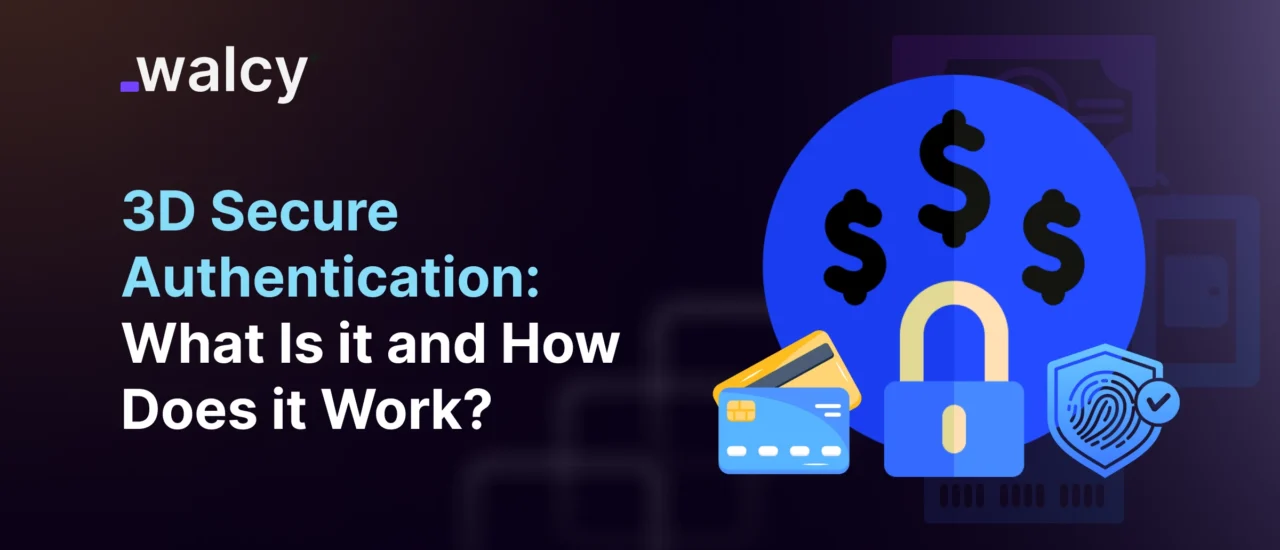In the modern day, security for online payments is nowadays a feature that is demanded in e-commerce.
With fraudsters and cybercrime on the increase, every merchant and consumer should actually guarantee the type of transaction made in cyberspace to be secure.
Among several developments regarding security matters concerning online payment, 3D Secure Authentication is one key development that offers a safety feature that also covers credit and debit card payouts online.
In this article, discussions are made on what 3D Secure Authentication is, how it works, benefits accruing from it, common issues such as 3D Secure Authentication failure, and how to resolve such.
Also, discussions about 3D Secure Authentication for Visa and Mastercard and how to turn on 3D Secure Authentication will be made.
What is 3D Secure Authentication?
3D Secure Authentication is short for Three-Domain Secure Authentication, a type of online payment security protocol developed to reduce fraud in online transactions.
It is implemented with the purpose of authenticating the cardholder in an e-commerce transaction for the cardholder, merchant, and bank.
This protocol would usually be applied to credit and debit card networks such as Visa and Mastercard to ensure that the actual person making the online payment is indeed the rightful cardholder.
The term “Three-Domain Secure” reflects the fact that the system operates across three domains:
- Issuer Domain: This is the cardholder’s bank or financial institution.
- Acquirer Domain: This is the merchant’s bank or payment gateway.
- Interoperability Domain: This is the infrastructure enabling communication between the issuer and the acquirer (such as the card network).
It, therefore, aims at minimizing fraud cases in online transactions to the lowest level and makes customers and merchants confident enough to use the digital channel.
How Does 3D Secure Authentication Work?
If a cardholder opts for an online payment on a website involved with the merchant, the procedure invokes the 3D Secure protocol in real-time.
Transaction Initiation:
The customer selects the merchandise to be purchased or the service to be utilized and arrives at the payment page of the merchant website.
Card Information Entry:
The customer fills in his/her credit/debit card details, namely the card number, expiration date, and CVV.
Forward to Issuer’s Bank:
The merchant website, after the entry of details of the card, forwards the request for payment to the customer’s Card issuing bank.
It is processed through the 3D Secure system.
Authentication Challenge
If the cardholder’s issuer supports 3D Secure, then the cardholder will be redirected to his bank’s authentication page, where he is supposed to verify his identity.
The form of authentication may vary according to the security policy of the bank but usually involves one or more of the following:
Password: A static password previously set up by the cardholder during registration.
One-Time Password (OTP): A dynamic code sent by SMS or email.
Biometric Authentication: The authentication for some issuers can be through biometrics: fingerprint, and face recognition.
Read about: Online Banking Security: A Comprehensive Overview”
Approval or Decline:
If successfully authenticated, then the transaction is approved and the customers are rerouted to the merchant website where they can finalize the amount of purchase.
Otherwise, in case authentication fails or if the cardholder doesn’t respond, the transaction gets declined.
Completion of Transaction:
Once authenticated, the amount is deducted through the payment gateway of the merchant, confirming the order.
Advantages of 3D Secure Authentication
3D Secure Authentication comes with added benefits to merchants and customers alike, which include:
Fraud Risk:
Additional authentication with 3D Secure ensures not only that the person transacting is a valid cardholder but also reduces fraudulent transactions.
Chargeback Prevention:
Since the authentication of 3D Secure is verification of the identity of the cardholder, this would therefore prevent chargeback requests by customers to refund payments due to fraudulent claims.
Increased Customer Confidence:
The customers are aware that their bank is verifying their identity for the payment to be made. This increases customers’ confidence in online shopping.
Compliances to Regulatory Standards:
Many countries/regions have come up with laws that require a customer authentication mechanism for strong authentication in online payment, and for which 3D Secure does support, in the best possible way, compliance with such regulatory laws.
An example can be considered as the PSD2 directive by the European Union.
Amongst other frustrating scenarios is the 3D Secure Authentication, which customers encounter.
Unsuccessful 3D Secure Authentication
Especially unable to complete a purchase online. These could be for the following reasons:
Wrong Credentials:
This means the wrong entry of passwords or OTs, and inability to authenticate will render it an unsuccessful authentication.
Customers can simply try re-checking their credentials.
Expired/Incorrect Card Info:
If a cardholder has expired or wrong information about their card, it may not get passed through the verification process.
Therefore, customers should ensure accurate and updated card details.
Read about: How Credit Card Transaction Processing Works? A Quick Guide
Issues in Bank Authentication System:
Sometimes, the problem could be on the bank’s side. There is an authentication failure if there is some technical issue from the cardholder’s bank or temporarily unavailable.
Support for customers at the bank may be contacted.
Bank Account Not Enrolled in 3D Secure:
Sometimes, customers might not have enrolled for 3D Secure authentication with their card issuer.
When the cardholder has not enrolled in 3D Secure, the authentication will fail. Customers have to contact the bank for enrollment in 3D Secure.
Network Issues:
Poor connectivity to the internet, like a slow or unstable connection, can disrupt the authentication process and lead to its failure.
Merchant Not Supporting 3D Secure:
The authentication will be skipped at times when the particular merchant’s gateway is incapable of supporting 3D Secure and hence the transaction might go on without further security checks.
Read about: Card-Not-Present (CNP) Transaction. Explained.
3D Secure Authentication for Visa and Mastercard
Visa and Mastercard are both using the 3D Secure protocol to help alleviate fraudulent activities even further and make payments online even safer.
Now, let’s find out how it works for each of these card networks:
3D Secure Authentication for Visa called Visa Secure
Visa implemented a protocol adding more security features to an online transaction called 3D Secure.
Visa Secure authentication will always use a password, OTP, or any other form provided by the cardholder and depends on the security practice of the bank.
Benefits of Visa Secure
Following are some of the key benefits of Visa Secure.
Strong Customer Authentication:
Visa Secure adheres to all requirements set up by regulations like PSD2, which asks for strong authentication for the payments taking place online.
Improved Fraud Prevention:
Adding another layer of security, Visa Secure contributes to the reduction of fraudulent transactions.
Seamless Experience:
The authentication process will be quick and easy for cardholders, with most authentications requiring a password or a biometric scan.
3D Secure Authentication for Mastercard (Mastercard Identity Check)
Also, Mastercard uses 3D Secure under the brand name Mastercard Identity Check.
This security protocol also works just in the way Visa Secure adds its extra layer to online transactions.
The services covered under Mastercard Identity Check:
Benefits of Mastercard Identity Check
Biometric Authentication:
Any user can provide biometric verification, fingerprint, or face identification, for quicker and more secure authentication.
Real-time Risk Assessment:
Authentication will only be needed when real-time risk assessment by Mastercard algorithms feels even a hint of risk, hence avoiding friction for your genuine customers.
Global Coverage:
Actually, this service is available on all global online payments for equal security.
Read about: Top Online Payment Methods Across The World.
How to Activate 3D Secure Authentication
The process of enabling 3D Secure Authentication depends on the respective card issuer and payment network.
However, it is generally straightforward with most banks, as explained below:
- Log into your bank account via the bank’s online banking website or mobile app.
- Find 3D Secure Enrollment: An option under the security settings in a form such as “Secure Online Transactions” or “3D Secure Registration.”
- Create Authentication Methods: Choose your preferred authentication method, which can be a password, OTP, or biometric data.
- Verify and Complete: Follow the next steps to verify your identity and make 3D Secure on your card.
- You can call any customer support of your bank in case of some problem and get more detailed information.
Conclusion
3D Secure Authentication is an effective guard in the combating of online fraud, with an added layer of protection for merchants and consumers alike.
It secures your web transactions with more verification of one’s identity through a password, OTPs, or other biometric modes, and validates those transactions.
Although 3D Secure Authentication has thrived in making e-payments more secure, several errors do occur, such as messages indicating that 3D Secure Authentication failed.
Most of these errors can be easily sorted out by double-checking one’s credentials, making sure the card is listed in 3D Secure, or even calling for support from the bank.
Be it Visa Secure, Mastercard Identity Check, or even another 3D Secure service, enabling such a protocol would not be a stupid thing to do, securing your online purchases while helping the world fight the growing crime called digital fraud.
Do follow us on Facebook and LinkedIn, to stay connected with us.



